CarEdge saved me over 4,500 dollars on a brand new Honda Pilot. I can't say thank you enough.
Price intelligence
Find a wide range of vehicle listings with market insights on new and used listings near you.


Help us personalize your CarEdge experience — it only takes a second.
Your answers help us personalize your CarEdge journey — we’ll follow up with tips and next steps that match your buying timeline.

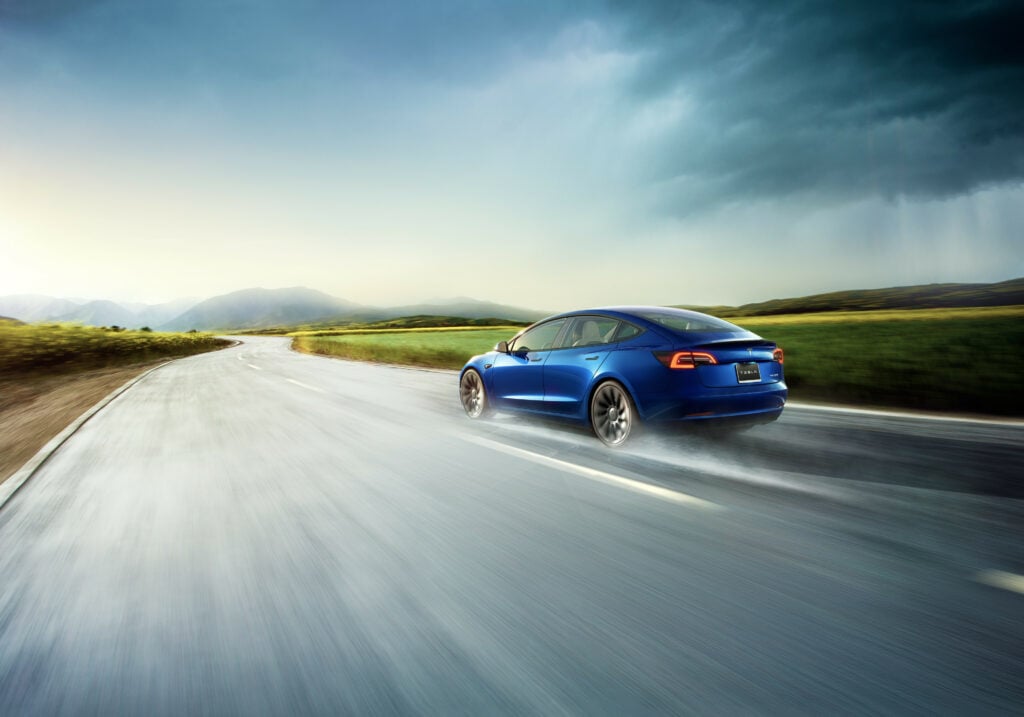
Until charging stations are commonplace, owning an electric vehicle will require more planning and preparation than one would expect for a day’s drive. Range is the new MPG, however real-world range isn’t easy to pin down. When the U.S. EPA provides official range ratings, the figures are based on vehicles driving in controlled environments on a predetermined track. EV ownership is full of nuances, and one of the greatest is the affect of weather on range. Let’s explore how electric vehicles perform in cold weather, hot weather, rain and wind.
Cold weather reduces EV range, but how much depends on how toasty you keep the cabin. Sub-freezing temperatures reduce range by between 12% and 30%, but that’s without the climate control on to warm the cabin. Data from AAA found that once the heater is turned on, EV range can drop by as much as 41%. Some real-world tests have found range losses closer to 50% with below-zero temperatures. That’s not good if you travel long distances across the northern states or the Interior West. More on specific impacts below.
Yes, hot weather does reduce EV range. According to research conducted by AAA, hot temperatures don’t have quite as great of an impact as cold temperatures, but it’s still noticeable. In temperatures of 95 degrees Fahrenheit and the air conditioning on, driving range decreases by 17% on average.
A 17% drop in range would mean that a Model Y normally rated for 330 miles on a charge would get closer to 273 miles. Not too big of a deal. For electric vehicles with less EPA-rated range, it matters more. The standard range 2022 Nissan Leaf normally gets 150 miles on a charge, but that would drop to 124 miles in 95-degree weather. Ouch.
Rain, snow and anything else falling from the sky does lower EV range. Why? It creates drag, and EV efficiency is all about aerodynamics. The heavier the rain, the greater the impact on range, even if temperatures are perfect for battery performance.
Speaking of which, what is the ideal temperature for electric vehicle battery performance? Geotab’s analysis of data from 4,200 EVs found that 70 degrees Fahrenheit (21.5 Celsius) is ideal for battery performance. That’s not only perfect for maximum range, it’s great weather all around. Learn more in Geotab’s full report.
Similarly, wind’s impacts on electric vehicle range have to do with drag. Drag is in essence aerodynamic friction. Your fancy new electric car can’t slide through the air so efficiently with friction working on it.
Wind can work against you or for you. With a steady tailwind pushing you along, it’s common to exceed range expectations even on the highway. When there’s a substantial headwind, range drops, and sometimes by quite a lot. The impacts of wind on EV range are much more noticeable at highway speeds. It’s possible to gain or lose up to 20% of expected range depending on wind direction.
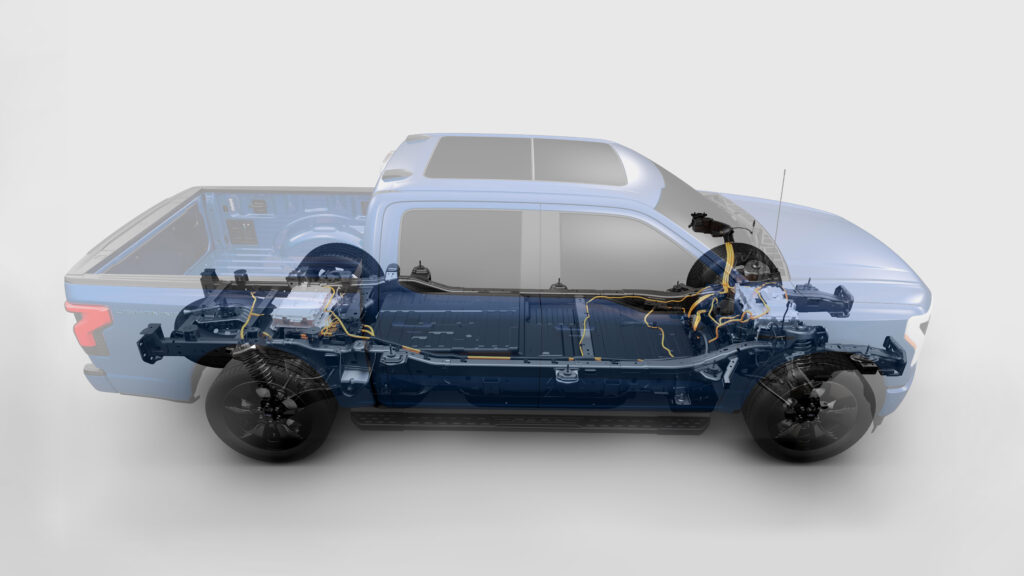
Temperature impacts battery performance differently depending on battery type and overall vehicle engineering. Features such as a heat pump, advanced battery preconditioning and even heated seats are just some of the many ways that engineers can do their best to optimize EV performance in suboptimal weather.
EV data specialists at Recurrent looked at data from all of the popular electric vehicle models. They found that EV range in hot and cold weather varies widely from one make and model to another.
Here’s how some of America’s most popular electric vehicles are affected by cold weather and summer heat.
| Make | Model | Rated Range | Real-World Range (70 deg F) | Cold Weather Range Loss |
|---|---|---|---|---|
| Tesla | Model 3 | 353 miles | 339 miles | 335 miles (-5% from rated range) |
| Tesla | Model Y | 330 miles | 320 miles | 323 miles (-2% from rated range) |
| Tesla | Model S | 405 miles | 397 miles | 380 miles (-6% from rated range) |
| Tesla | Model X | 351 miles | 326 miles | 326 miles (-7% from rated range) |
| Ford | Mustang Mach-E | 305 miles | 284 miles | 198 miles (-35% from rated range) |
| Chevrolet | Bolt | 259 miles | 254 miles | 171 miles (-34% from rated range) |
| Nissan | Leaf | 226 miles | 237 miles | 205 miles (-9% from rated range) |
| Hyundai | Kona | 258 miles | 288 miles | 240 miles (-7% from rated range) |
| Audi | e-tron | 222 miles | 224 miles | 206 miles (-7% from rated range) |
For a full breakdown of Recurrent’s findings, check out their 2021 report here.
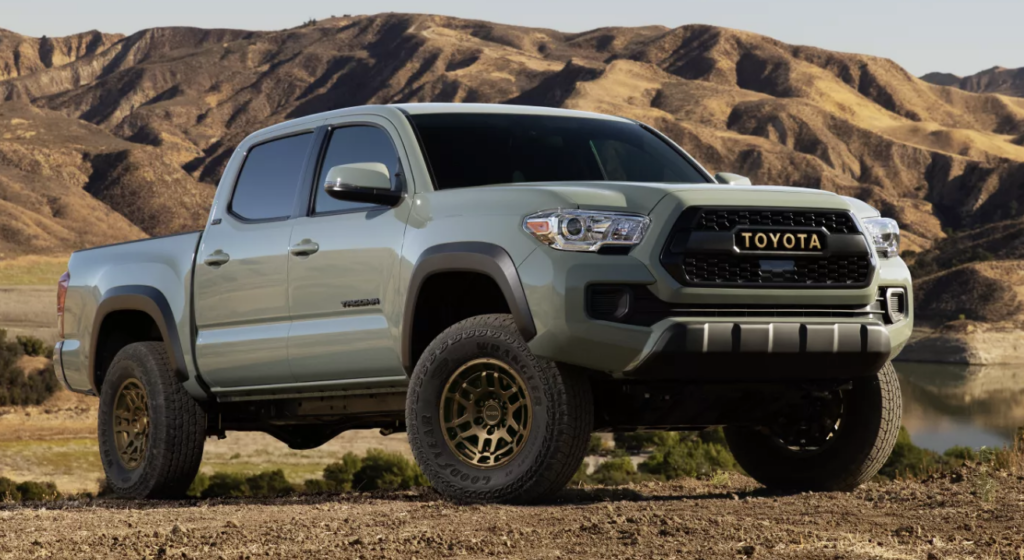
The U.S. Department of Energy says that vehicles powered by traditional internal combustion engines (ICE) also suffer efficiency losses as a result of hot and cold weather. ICE vehicles are especially impacted by hot weather due to air conditioning power requirements. The Department of Energy estimates that ICE vehicles lose about 25% of their typical fuel economy when operating with air conditioning on high settings.
One major difference between EVs and ICE vehicles is the affect of cold weather. Electric vehicles use quite a bit of energy to run the heater, whereas ICE vehicles redirect heat generated by the engine and therefore avoid significant effects on efficiency.
Although EV charging stations are becoming commonplace around major cities, many interstate highways have sparse charging infrastructure. Until charging stations are more reliable and easier to find, driving an EV in cold and hot weather will complicate EV ownership and delay EV adoption. A national charging network is on the way, and public fast-charging networks are growing quickly. With EV market share soaring every month, it’s imperative that we find solutions to this seasonal challenge that affects millions.
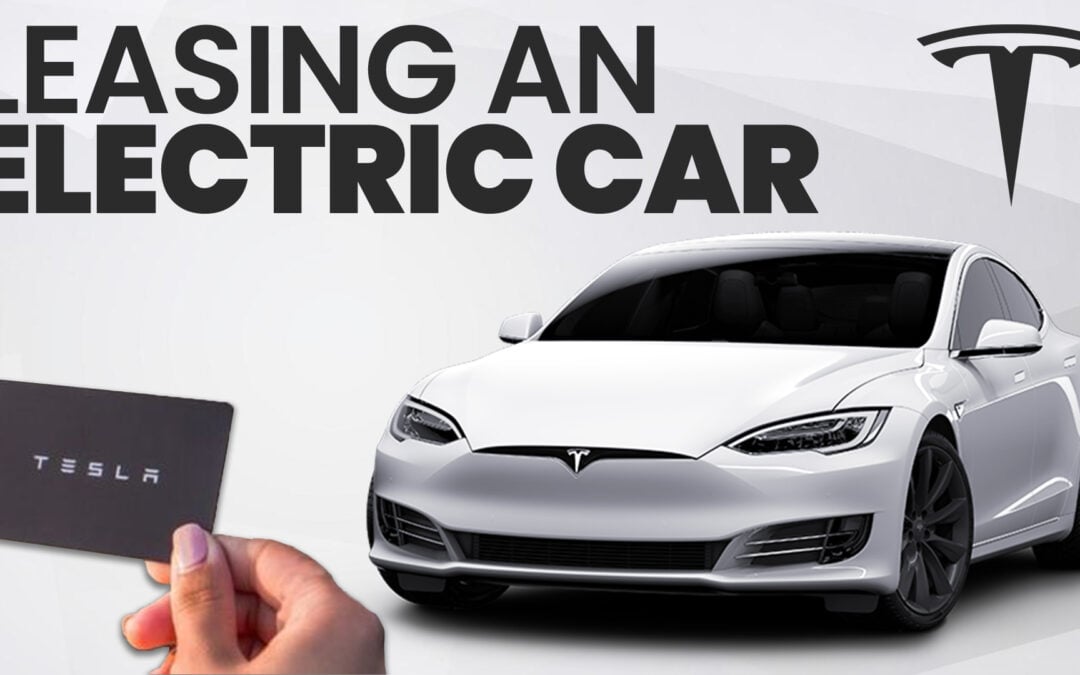
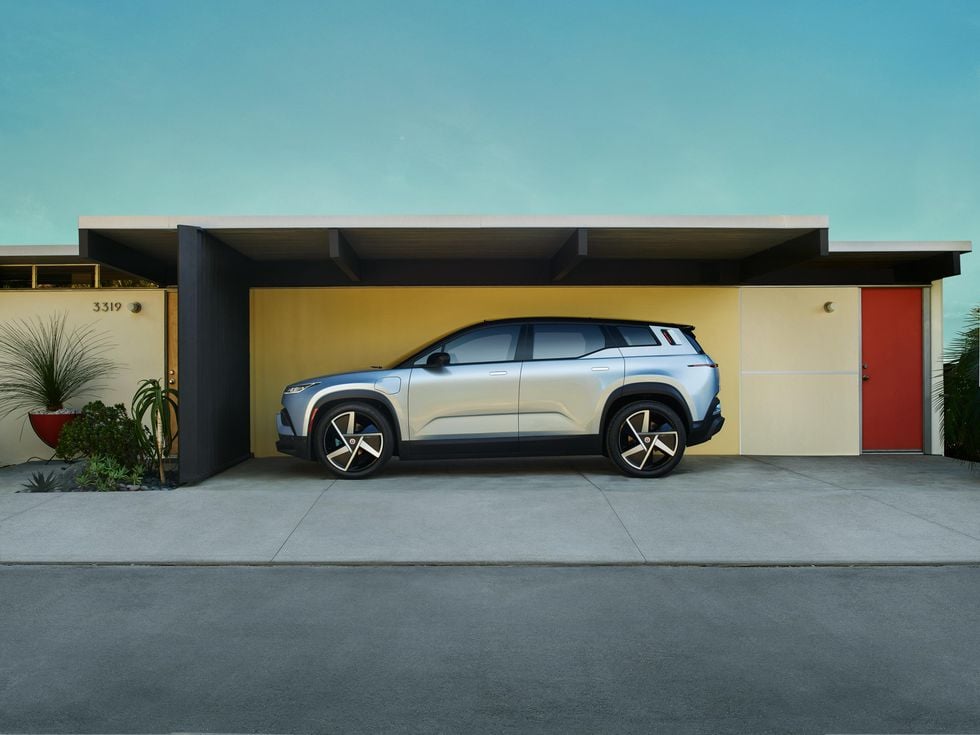
We recently shared five affordable electric cars to buy in 2022. “Affordable” only goes so far in today’s auto market, and not a single top pick lists for under $35,000. With battery and charging advancements around every corner, leasing is a great way to keep up with the pace of technology without having to purchase a new car. All things considered, these are the 5 best electric cars to lease in 2022.
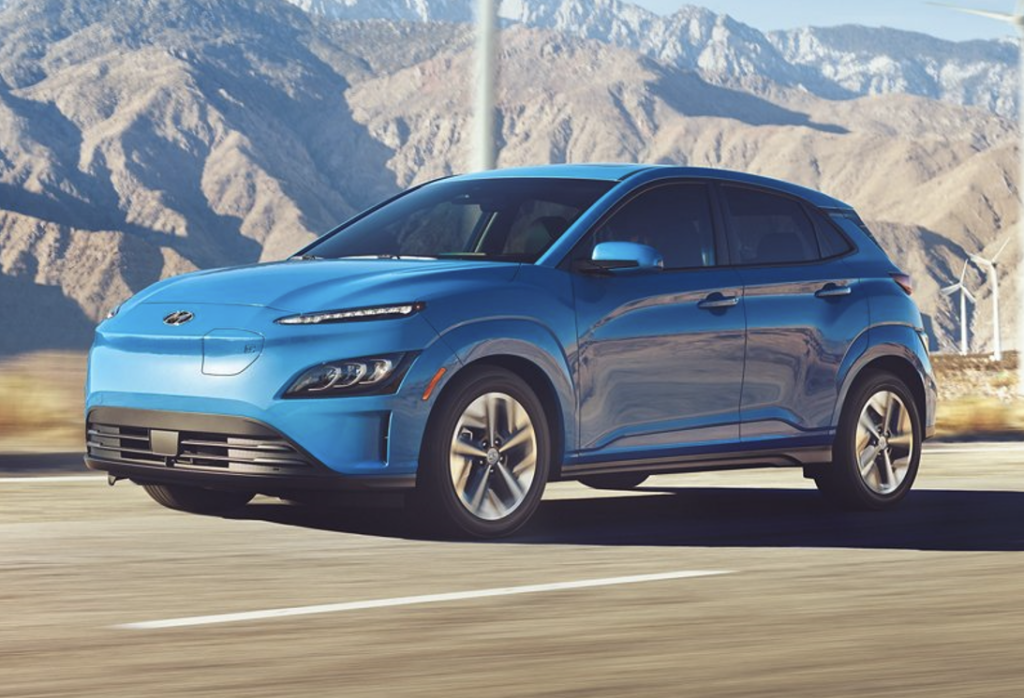
The often overlooked Hyundai Kona EV was the Korean automaker’s electric flagship years before the fancy new IONIQ 5 stole the show. When it comes down to numbers, the Kona EV is a great value. We featured it in our recent CarEdge list of the best affordable electric cars.
This front-wheel drive subcompact crossover gets 258 miles on the charge, exceptional range for a budget EV. Some owners get over 275 miles on a single charge. If you plug in at home, charging to 100% from a 240-volt dryer outlet will only take you about 9 hours from 10% state of charge. That will get you a full battery overnight while you’re sleeping. At a DC fast charger, the Kona is behind the competition. In 47 minutes, the Kona Electric charges from 10% to 80% capacity. For perspective, the new Hyundai IONIQ 5 can do the same in 18 minutes, but it costs nearly twice as much.
You can lease the Hyundai Kona EV for just $259 /mo with $3,699 due at lease signing for 36 months and 10,000 miles of driving allowance per year. If this is your price range, the Chevy Bolt, Nissan Leaf, and the Kona’s cousin the e-Niro are the only other options. You can’t go wrong with the Kona at this price point.
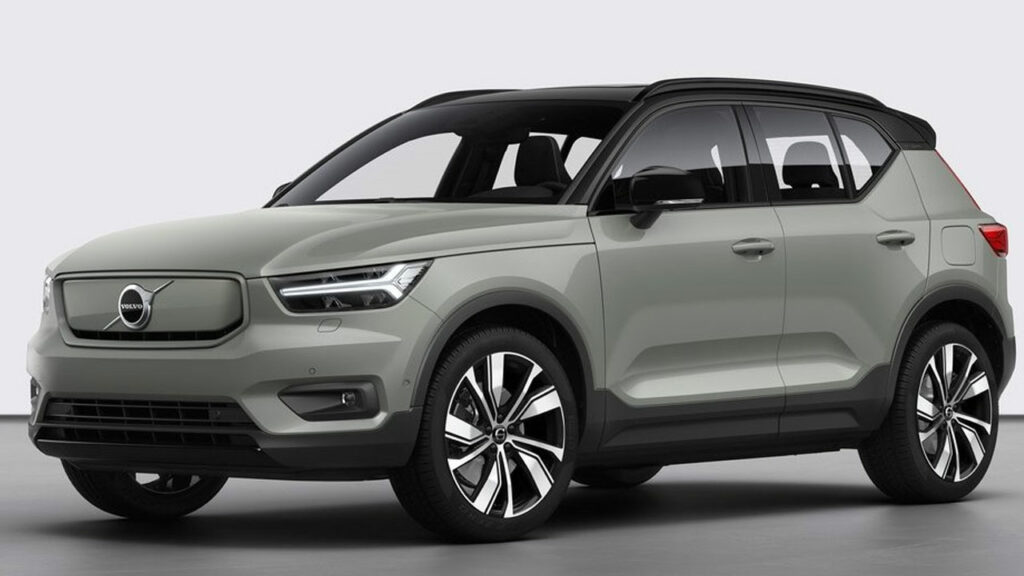
Volvo and sibling Polestar are ramping up their commitment to electrification. The Volvo XC40 Recharge (pure electric) has been the darling of auto reviewers time and time again. Test drivers share a common theme: the XC40 Recharge is a lot more fun to drive than they had expected.
It may look like a family car, but this electric Volvo can launch to 60 mph in just 4.7 seconds as it puts down power via dual electric motors. With 223 miles of range on a charge and up to 150 kW charging speeds at a public fast charger, the XC40 Recharge is just about average for an electric car in 2022. It IS a solid road-tripper, unlike some other options on this list.
Infotainment runs on Google’s Android Auto operating system, much like the popular Polestar 2. An upscale cabin adorned with the elegant and dark-themed interior we’ve come to expect from Volvo features plenty of hidden storage and generous room in the back seat. This electric crossover feels a lot larger than it really is.
Leasing the XC40 Recharge is available for $540 a month with $3,500 down, and 10,000 miles of annual driving allowance. If you’re looking for a peppy electric crossover with a Scandinavian flair, Volvo’s XC40 Recharge just might be the one.
Learn more about the 2022 XC40 Recharge here.
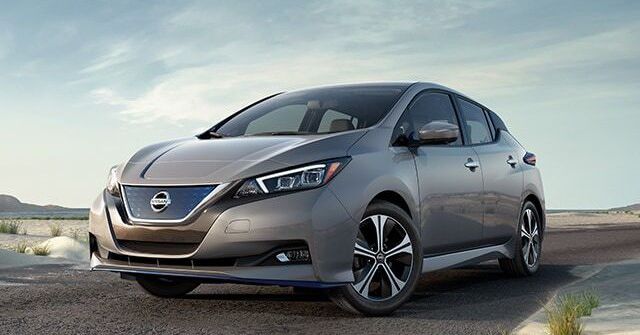
If you’re shopping on a tight budget, don’t overlook the original posterchild of EVs, the Nissan Leaf. A few years before Tesla’s sales ballooned into EV domination, the Leaf was leading electric car sales in America. Why did it fall out of favor? It looks like an appliance, drives like an appliance, can’t make it very far on a charge, and charges slower than most of the competition. But it’s cheap!
With those complaints aside, the Nissan Leaf is still a solid choice for a lease in 2022. We can only recommend the Leaf in the extended range, faster charging versions. That would be the Plus models, which are rated for up to 226 miles on a charge, and can charge at 100 kW charging speeds at a DC fast charger equipped with the CHAdeMO adapter.
The Leaf is not recommended for frequent long-distance travelers. It’s just too much of a pain to stop so frequently and charge for a whole hour once every 180 miles. But for everyone else, the Leaf is a great electric car for around town. Plus, it still qualifies for the EV tax credit.
As of April, the 2022 Nissan Leaf is available for $179 per month for 36 months with $4,179 due at signing. It’s important to note that Nissan keeps the EV tax credit when you lease a Leaf. Regardless, that’s as cheap as it gets to lease a new EV in 2022.
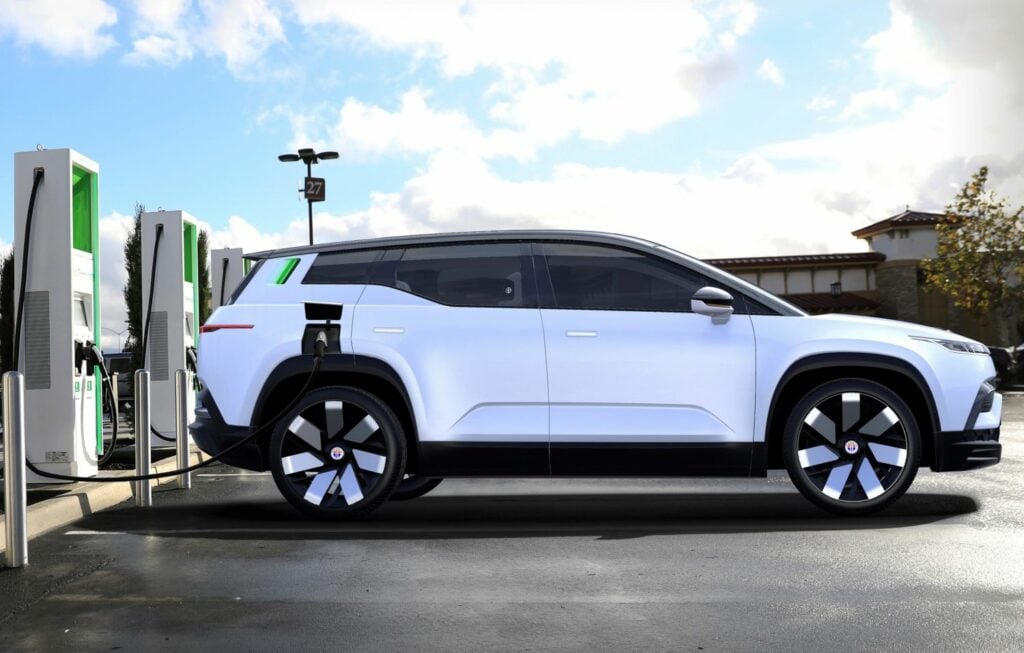
At a time when the average transaction price for a new car is approaching $50,000, a sub-$40,000 electric crossover sounds too good to be true. The Fisker Ocean introduces rare value in the crowded EV segment. We recently shared an in-depth review of the Fisker Ocean.
For just $379 per month, you can lease a Fisker Ocean SUV with the new Fisker Flexee Lease offer. Fisker says that they believe electric vehicles should be affordable to all, and this is how they’re going to try to get there.
With a Fisker Flexee Lease, there are no term limits and you can cancel at any time. It’s basically a long-term rental that appears to be worry-free. After twelve years of leased driving, Fisker will retire and recycle the electric SUV. The Fisker Flexee Lease requires an initial payment of $2,999, and it includes up to 30,000 miles per year. Maintenance is covered.
The Fisker Ocean will be available in very limited quantities late this year. It won’t be until 2023 or even 2024 that a Fisker lease will be easy to come by. Nevertheless, keep it on your radar!
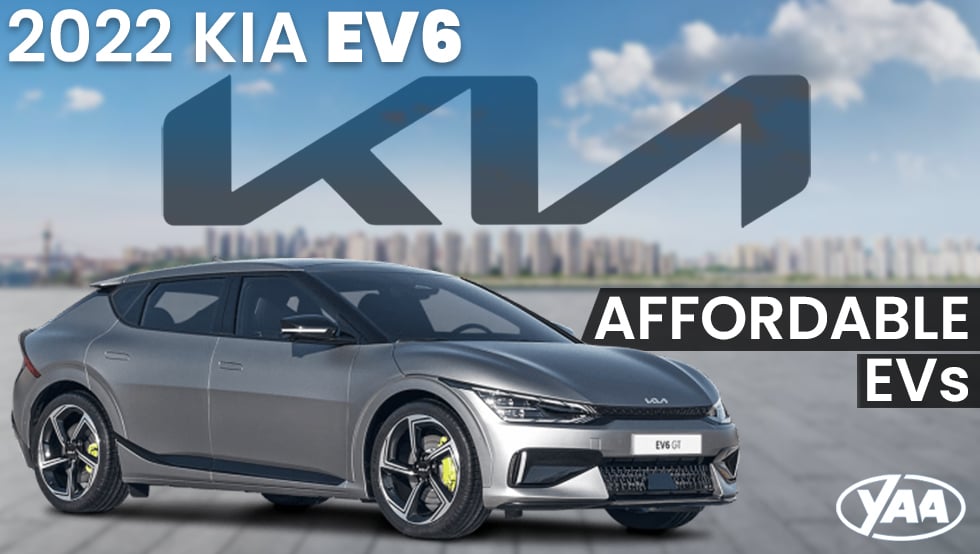
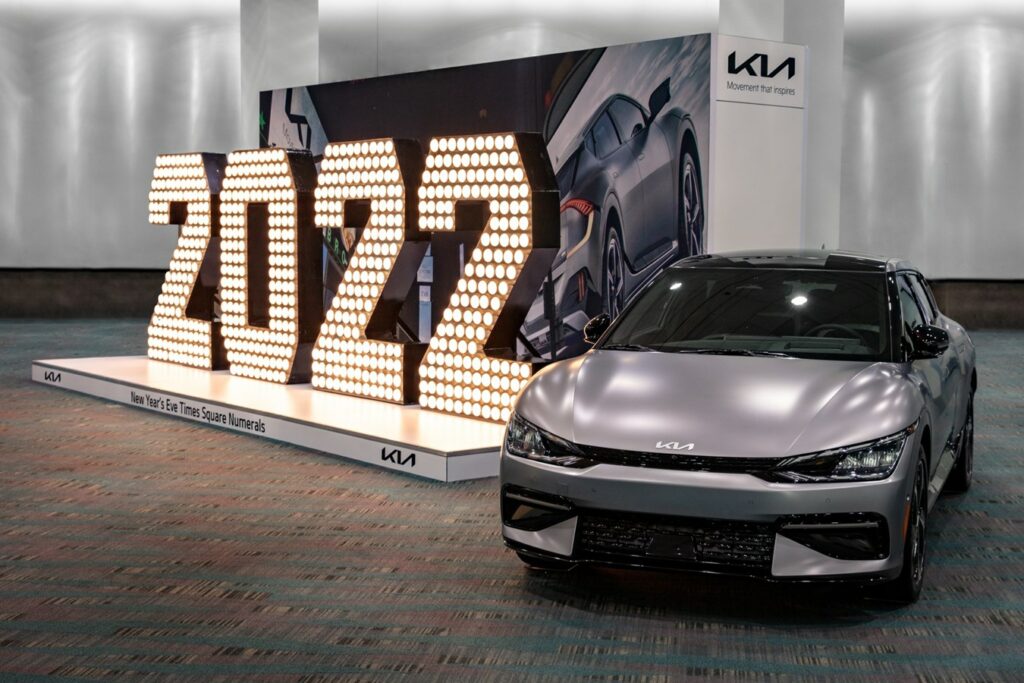
The average new vehicle sells for nearly $50,000, but not every vehicle costs the same to maintain and operate. Fuel economy, reliability, insurance, and maintenance needs are just some of the factors that determine the total cost of ownership for any vehicle. Automakers have made it clear that they’re bringing EVs to the masses, however cheap electric cars remain elusive.
Consumers in the market for an affordable vehicle in 2022 are presented with diverse options, including a larger selection of electric vehicles than ever before. EV‘s are no longer just for tech nerds. People who had never imagined themselves in an electric vehicle are making the switch simply for fuel savings.
However, it remains true that the majority of electric vehicles carry luxury price tags. It’s unlikely you’ll hear anyone say there are “cheap electric cars,” however there are affordable EVs. Here are five affordable electric vehicles that drivers love in 2022.
Starting at $40,760
240 – 260 miles of range
Learn more: CarEdge Review of the Volkswagen ID.4
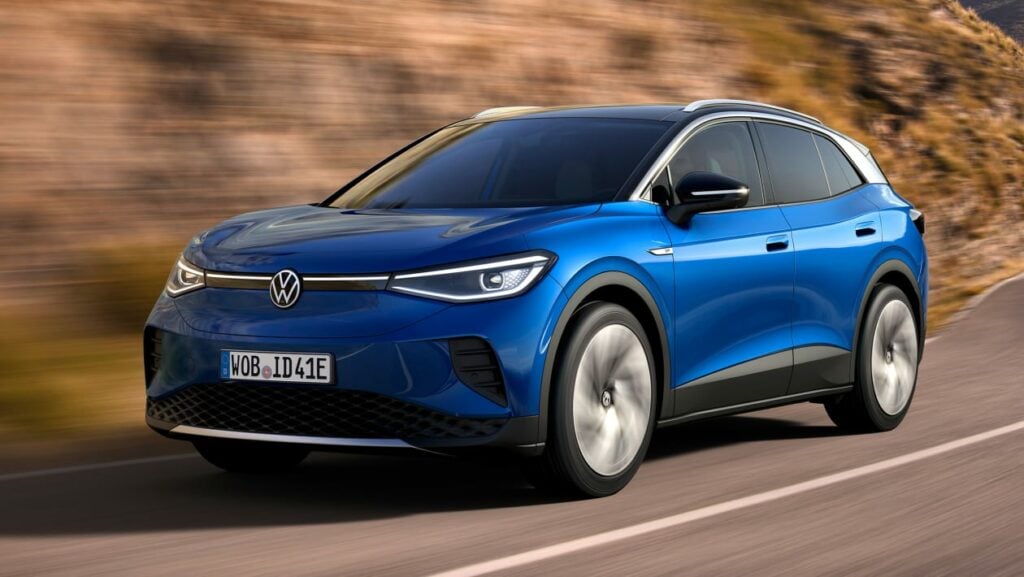
Pro:
Cons:
If you’re in the market for a great electric vehicle that will get you from A to B in comfort and confidence, the 2022 Volkswagen ID.4 should be on your short list. Capable performance, great safety ratings and a spacious cabin make the ID.4 a great place to be for the price point.
The 2022 ID.4 can go the distance, leaving range anxiety behind for the most part. Dozens of real-world range tests show that even on the highway at 70 mph, the ID.4 gets well over 200 miles on a charge. In city driving, closer to 300 miles is likely.
2022 updates are bringing bidirectional charging, plug-and-charge, increased range, quicker charging and major over-the-air updates to the ID.4. Even 2021 models will get new features via OTA updates this summer. Learn more about the game-changing capabilities of OTA updates here.
When it comes time to charge, you can either juice up at home overnight, or take advantage of 3 years of free Electrify America charging with unlimited miles. For frequent travelers, the Electrify America incentive can be worth a few thousand dollars. At a fast charger, charging to 80% takes about 30 minutes.
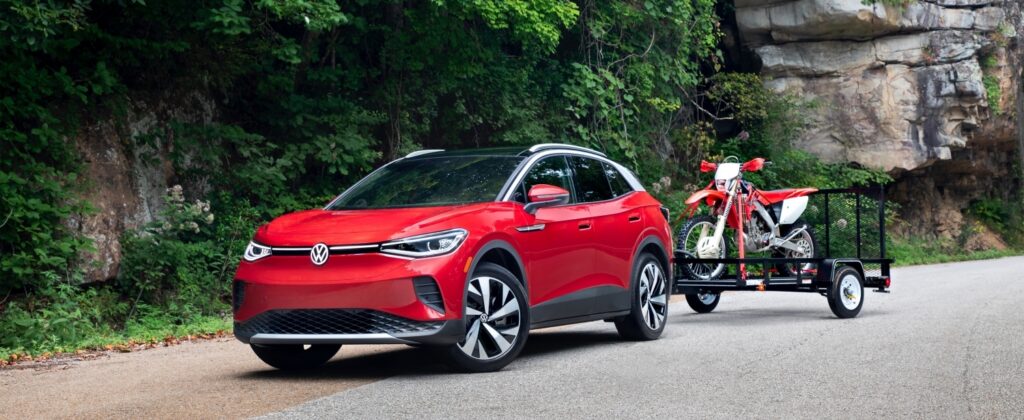
The all-wheel drive version of the ID.4 is where this crossover really shines. Adding another motor to the front axle increases horsepower to 295 with 339 lb-ft of torque and a very satisfying 0-60 time of just 5.4 seconds. However, it’s not quite a car you’d take to the track. The handling is well-tuned for attacking winding roads in inclement weather, although it maintains a more family-oriented demeanor.
The 2021 ID.4 earned a Top Safety Pick+ rating from the Insurance Institute for Highway Safety, and a five-star rating from the National Highway Traffic Safety Administration’s rigorous crash testing. CarEdge recently detailed all electric vehicle safety ratings in 2022.
The Volkswagen ID.4 is about as good as it gets for its use case. For the frugal-minded, It’s a particularly compelling car in the base Pro trim with rear-wheel drive (MSRP $40,760). Volkswagen’s EVs still qualify for the $7,500 federal EV tax credit in the US, which can turn the entry-level ID.4 into a $34,000 purchase. That’s an amazing value in today’s market.
Starting at $40,900
232 – 310 miles of range
Learn more: CarEdge Review of the Kia EV6
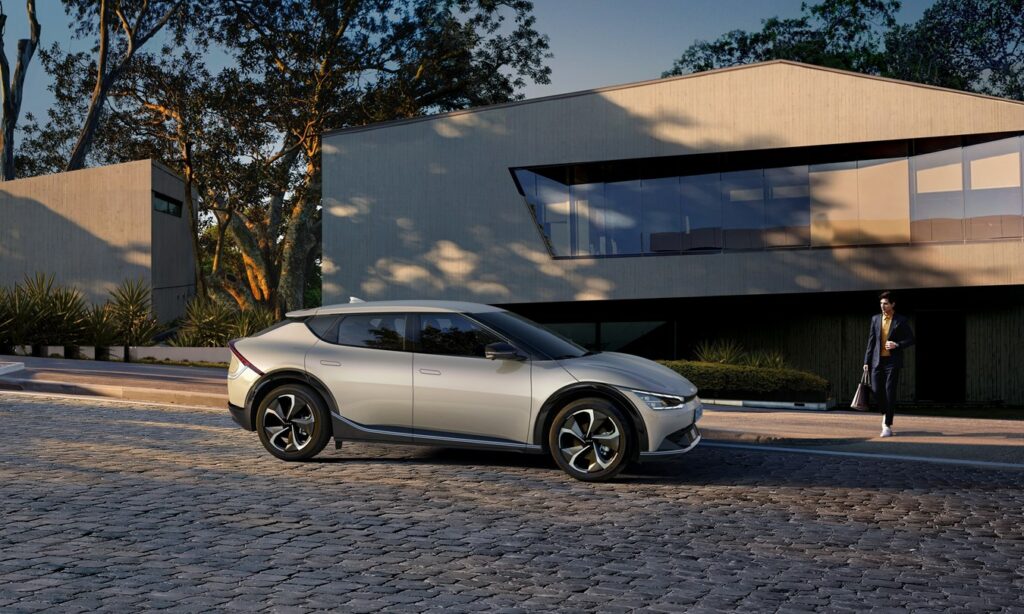
Pro:
Cons:
If you’re a techie who demands the latest and greatest that automakers have to offer, but don’t have the budget to buy an extravagant Lucid Air or Mercedes EQS, the Kia EV6 and its platform sibling the Hyundai IONIQ 5 just might be what you’re looking for.
Kia and Hyundai partnered up to engineer the new E-GMP battery and powertrain platform. The first two models to feature this advanced architecture are the Hyundai IONIQ 5 and the all-new Kia EV6. Both of these crossovers offer ultra-fast charging, impressive range, and over-the-air update capability for just over $40,000.
The 2022 Kia EV6 has a premium feel to it, and that’s something we’re still learning to expect from Kia. Aggressive looks on the outside are met with a welcoming, spacious interior. The cabin is open and airy.
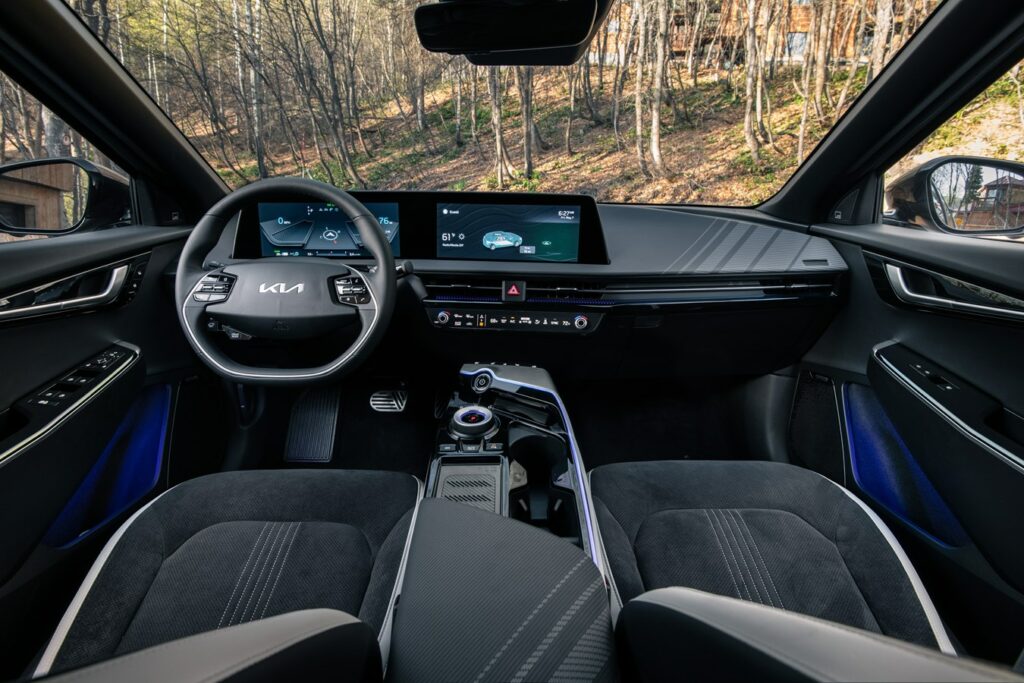
The EV6’s front dash consists of dual 12.3” screens, one for infotainment and another for the instrument cluster. Higher trims also include an augmented reality heads-up display that projects driving directions and basic info onto the windshield within the driver’s line of sight.
The Kia EV6 is no slouch; it can hustle with a heavy foot. All-wheel drive variants produce 313 hp and a 0-60 time of 5.1 seconds, but range drops to 274 miles on a charge. Longer range rear-wheel drive trims still reach 60 mph in just 7.3 seconds. For perspective, that’s about two seconds quicker than the popular Subaru Forester.
With a starting MSRP around $42,000 with destination, the 2022 EV6 represents incredible value for leading-edge tech. It even has faster charging and longer range than similarly priced Tesla models.
The greatest advantage the Kia EV6 has over any Tesla model is that the EV6 qualifies for the federal electric vehicle tax credit. Buyers can save up to $7,500 on their federal taxes if they purchase a Kia EV. Tesla and GM brands are no longer eligible since they’ve already sold greater than 200,000 electric cars.
If you’re a fan of the specs but not the aggressive looks, the Hyundai IONIQ 5 may be the perfect compromise.
Starting at $40,925
220 – 303 miles of range
Learn more: CarEdge Review of the Hyundai IONIQ 5
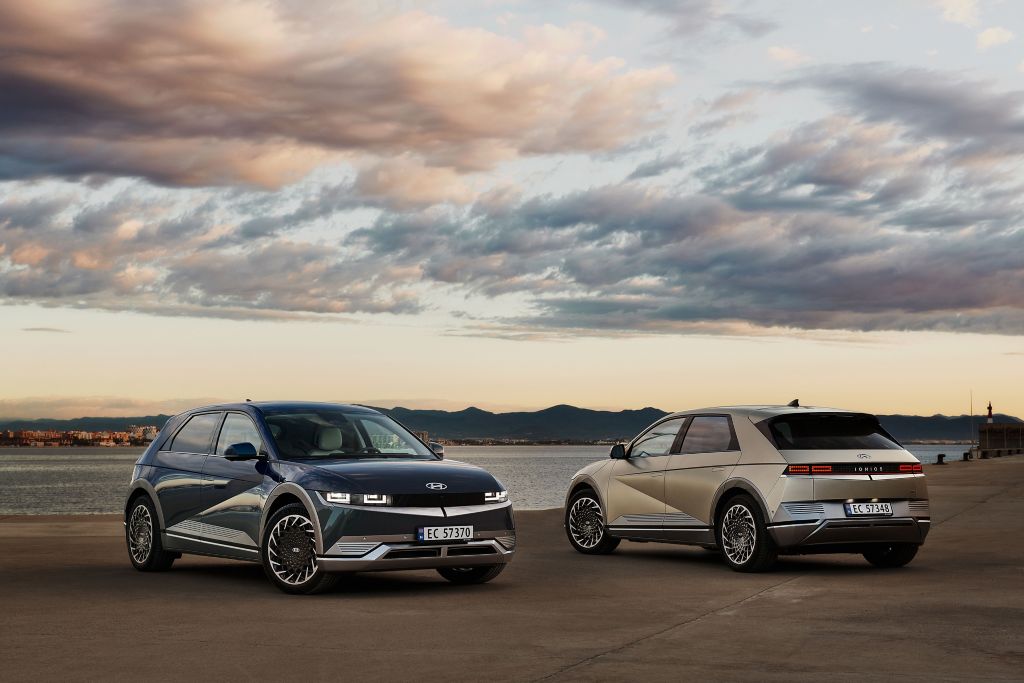
The IONIQ 5 made our CarEdge list of the 5 best cars to buy in 2022!
Pro:
Cons:
The all-new 2022 Hyundai IONIQ 5 is a uniquely retro electric crossover. You’re sure to get plenty of thumbs-ups at stoplights in this head-turner. It’s under $50,000, and surprisingly available at dealerships today. Hyundai says that the pixelated design draws inspiration from the first car they brought to America, the Hyundai Pony.
Also built on the new E-GMP platform, the Kia EV6’s sibling is as comfortable slamming into curves as it is cruising the interstate. The all-wheel drive variant is adequately powered with 320 horsepower and 446 lb-ft of torque. The AWD IONIQ 5 can get up and go with a 0-60 time of 5.2 seconds. That’s just a hair above the current electric crossover sales champion, the Tesla Model Y.
Range varies from 220 miles up to 303 miles depending on battery size and drivetrain. That’s slightly above average for a 2022 model. It’s important to note that some real-world highway range tests have struggled to get the IONIQ 5 past 200 miles on a charge.
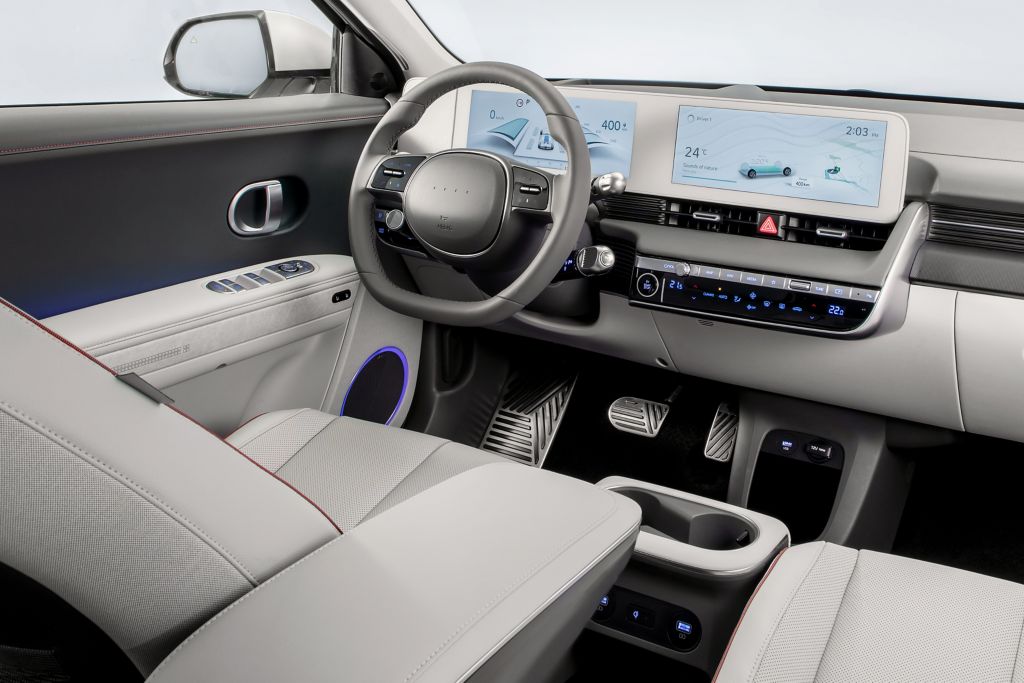
The IONIQ 5 does have one massive advantage over its competitors: charging speed. When you plug in at any Electrify America charging station, the IONIQ 5 can handle up to 230 kW charging speeds. Charging from 10% to 80% (adding 212 miles of range) takes just 18 minutes. The only other vehicle on the market capable of charging that fast is the $75,000+ Lucid Air luxury sedan. The IONIQ 5 has a major charging advantage over the ID.4 and Mustang Mach-E.
The IONIQ 5 is part crossover, part oversized hatchback. That’s not a bad thing. Somehow, Hyundai pulls off this delicate balance in all the right ways. The Ioniq 5’s interior volume (passenger and cargo combined) is 133.7 cubic feet, which is larger than the VW ID.4 and Ford Mustang Mach-E. The roominess has more in common with a Hyundai Santa Fe than a Kona.
Starting at just $40,925 for the 58 kWh smaller battery base model, the IONIQ 5 is available for thousands less than was expected. Most buyers will opt for the larger battery pack (77.4 kWh), which is comparable to other class competitors. With standard rear-wheel drive, the IONIQ 5 SE with the long range battery starts at $44,875. All-wheel drive is available for $3,500-3,900 more. The Limited trim starts at $51,825 and maxes out over $56,000 with all options included.
Starting at $44,990
272 miles of range
Learn more: CarEdge Review of the Tesla Model 3
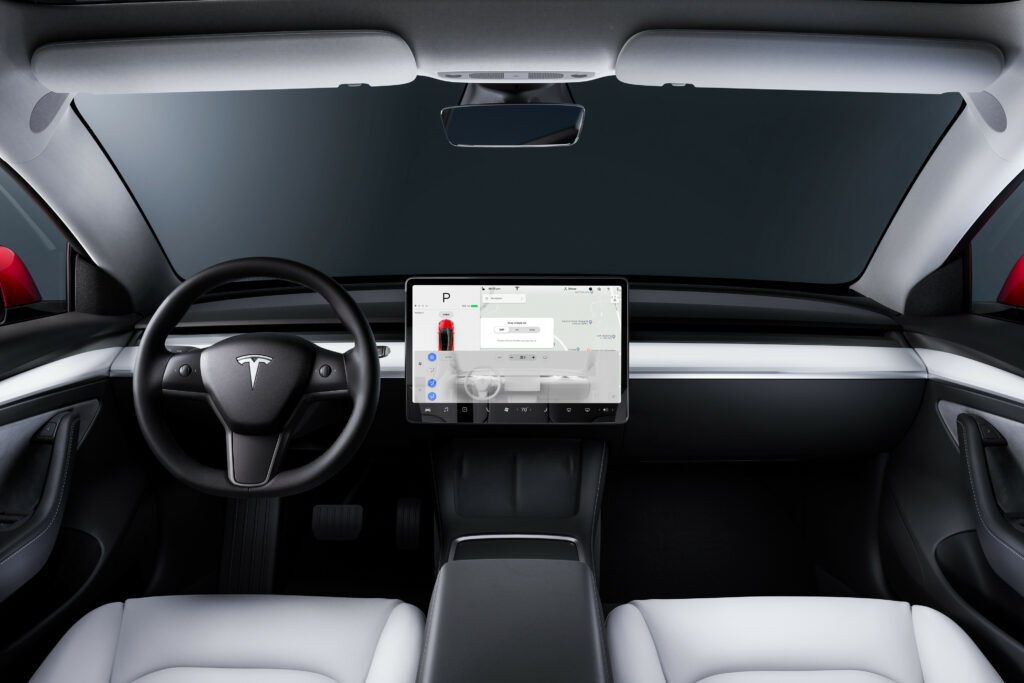
Pro:
Cons:
Say hello to the only Tesla available for less than $50,000. In reality, the 2022 Rear-Wheel Drive Model 3 is the same car as the ‘Standard Range Plus’ variant that the American automaker sold until 2021. Perhaps calling something ‘standard’ just wasn’t on-brand for the luxury automaker.
Don’t get your hopes up if you’re thinking you can get access to Tesla’s Full Self-Driving for under 50 grand. Tesla now charges $12,000 for FSD, which would bring the 2022 Rear-Wheel Drive Model 3 closer to $60,000 after taxes and fees.
Find out everything you need to know about self-driving cars in our CarEdge guide to autonomous vehicles.

This base trim has received some 2022 upgrades, most notably an increase in range from 262 miles to 272 miles on a charge with the included 18” aero wheels. The 2022 Rear-Wheel Drive Model 3 features new lithium iron phosphate (LFP) batteries which will allow the car to repeatedly charge to 100% without risking as much harm to the life of the battery.
The Rear-Wheel Drive Model 3 is powered by a single electric motor that produces 296 hp and 277 pound-feet of torque. This sedan powers to 60 mph in just 5.8 seconds, not bad for a base trim.
At a Tesla Supercharger, its 60 kWh battery pack can accept up to 170 kW when nearly empty. In the real world, that means charging from 10-80% (adding 190 miles of range) takes about 26 minutes.
The 2022 Tesla Model 3 Rear-Wheel Drive now sells for a notoriously non-negotiable $44,990, plus the $1,200 destination and doc fee. So the cheapest Tesla is now $46,190. Just a year ago, it was $38,190.
Starting at $34,000
258 miles of range
Search hundreds of Hyundai Kona EVs for sale today at CarEdge Car Search!

Pro:
Cons:
Hyundai’s forgotten electric vehicle should not be overlooked by those in search of a very affordable entry into electric mobility. The 2022 Hyundai Kona EV may not look all that attractive, but it has decent range and room to fit most lifestyles.
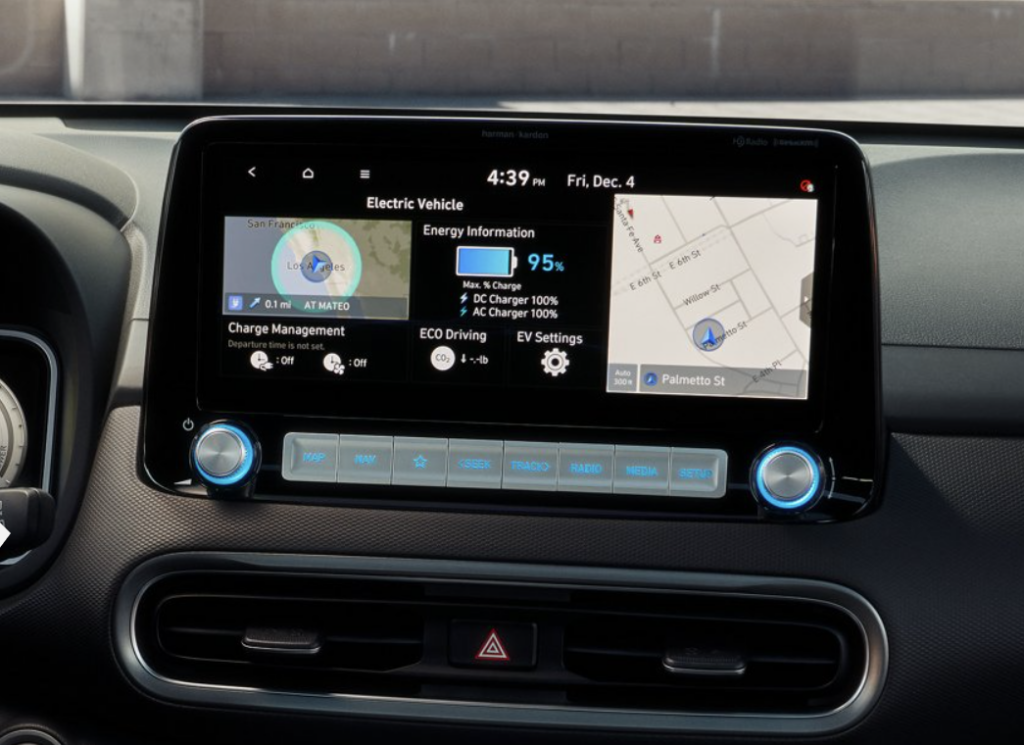
For just $34,000 before incentives, you can become the owner of the original Hyundai EV. This front-wheel drive subcompact crossover gets 258 miles on the charge, exceptional range for a budget EV. Some owners get over 275 miles on a single charge. The Limited trim, top-of-the-line option comes in at $42,500.
If you plug in at home, charging to 100% from a 240-volt dryer outlet will only take you about 9 hours from 10% state of charge. That will get you a full battery overnight while you’re sleeping. At a DC fast charger, the Kona is behind the competition. In 47 minutes, the Kona Electric charges from 10% to 80% capacity.
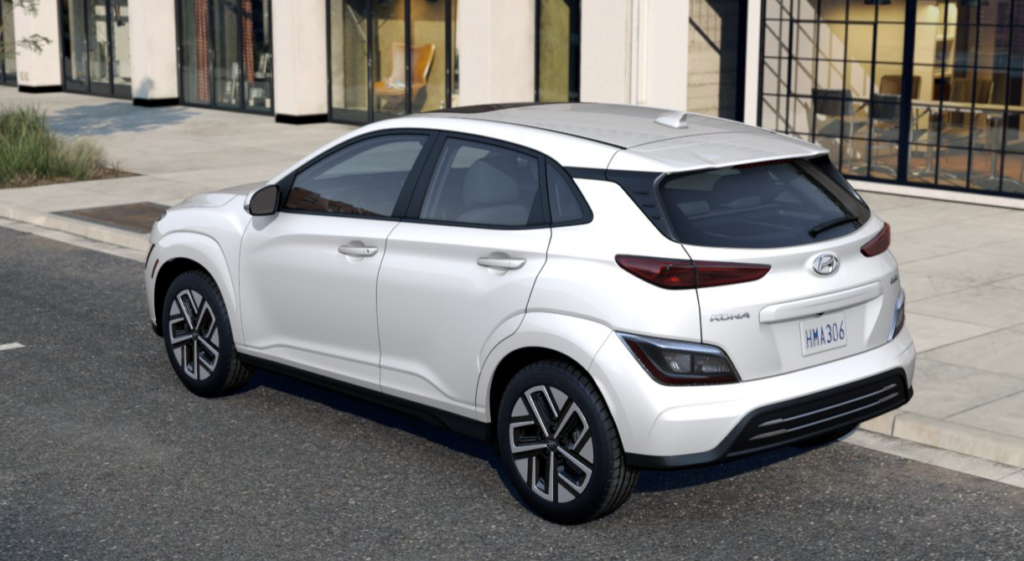
If you’re more of a Kia lover, we have great news. The Kia e-Niro is basically the Kona Electric with a Kia face.
Due to the Kona Electric’s charging faults, this would not be a great road-tripping vehicle. But if you’re looking for cheap electric cars perfect for zipping around town, this is a great deal not to be overlooked.
Available in 2023, but you can reserve one now.
Learn More: CarEdge review of the Fisker Ocean

The Fisker Ocean sure does promise a lot. Will it deliver? At just $37,000, Fisker’s all-electric brand quotes 250 miles of range for the entry-level Fisker Ocean crossover. The 2023 Fisker Ocean didn’t make our official list for a few reasons. It hasn’t been produced yet, and delays have pushed the start of production back to November 2022. Fisker says they have 32,000 reservations in the books, so if you’re looking to buy one, it may not be possible until mid-2023. Furthermore, the more capable and sporty Fisker Ocean trims start at $50,000.
You may be wondering where the Chevrolet Bolt and Nissan Leaf are on this list of cheap electric cars. The Leaf is one of the originators of the EV segment, having started it all back in 2011. However, Nissan has regrettably not invested in range or battery performance upgrades over the years. It’s failing to keep up with the growing competition.
The 2022 Nissan Leaf S gets just 149 miles of range and charges quite slowly at between 50 and 100 kilowatts at a fast charger. It is the MOST affordable electric vehicle, with prices ranging from $27,400 to $37,400, however we can’t recommend an EV that leaves the lot at a disadvantage. As electric vehicles come to market with 250 to 400 mile ranges, how will the Leaf retain any resale value?
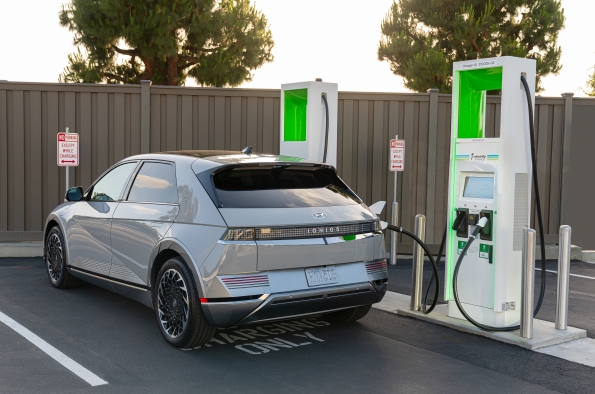
And then there’s the Chevrolet Bolt. It’s affordable and even looks okay with the recent facelift. While it’s true that the recall fix is giving Bolts brand-new, modernized battery packs, the reliability of the Bolt has taken such a hit that it’s too great of a financial risk for today’s consumers to get behind the wheel worry-free. You don’t want your $31,000 purchase to be a symbol of unprecedented fire risk. What would it take to change my mind? At this point, a few years of problem-free driving. Until then stay away from the Chevrolet Bolt. As you can see, there are plenty of other affordable electric vehicles out there in 2022.
Follow the money. Automakers are going all-in on electric vehicles in 2022 and beyond. The consumer benefits as competition rises, so perhaps affordable EVs are here to stay. If you’re looking to go electric in 2022, you don’t have to buy a Tesla, Nissan Leaf or Chevy Bolt. Every automaker is racing to become the next big thing in the world of EVs.
Some parting advice: consider all options, and test drive as many electric vehicles as you can. You’ll be amazed at what’s out there, and even more amazed at what’s to come.
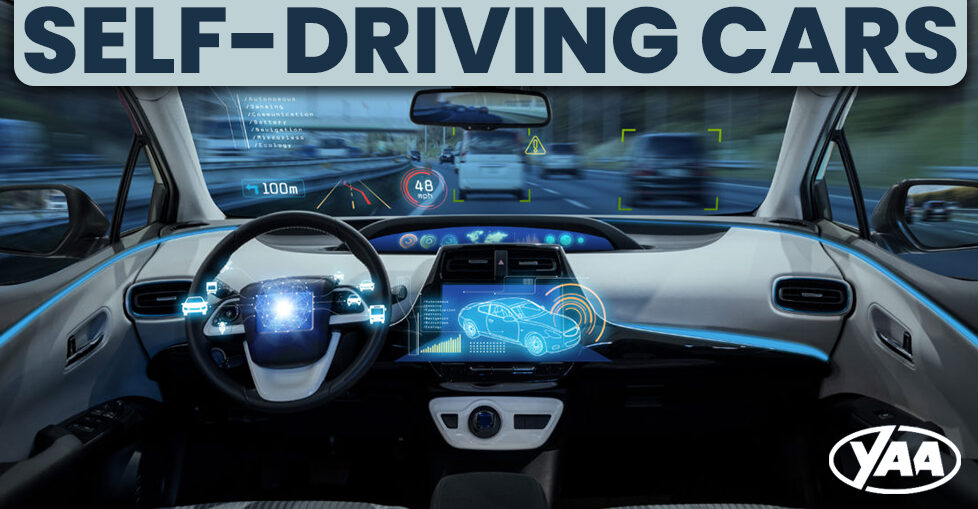

What does 2022 have in common with the 1939 World’s Fair? It’s the feeling that autonomous vehicles are right around the corner. Nearly every automaker, from Tesla to Ford, has overpromised and underdelivered on their plans for autonomous driving. Tesla CEO Elon Musk said it himself recently in an interview with researcher Lex Fridman. “I thought the self-driving problem would be hard, but it’s harder than I thought. I thought it would be very hard, but it was even harder than that,” Musk reflected. He’s not the only one to misjudge the enormity of the task at hand. You’d think automakers would stop giving themselves deadlines that are destined for letdowns.
It turns out that there’s been one overarching theme in the learnings from the past decade of development. Engineers now see that in order for self-driving cars to be safe and successful, cars will have to learn to think like a human. Computers are exceedingly good at performing repetitive tasks. What they’re not great at is responding to unique situations full of unknowns. The human brain is more capable than some give it credit for. We’re very good at dealing with unknowns and making complex decisions on the fly.
After reading this article, you’ll better understand what self driving cars are, the difference between self-driving cars and autonomous vehicles, and the terms and jargon associated with self-driving cars. Let’s dive in.
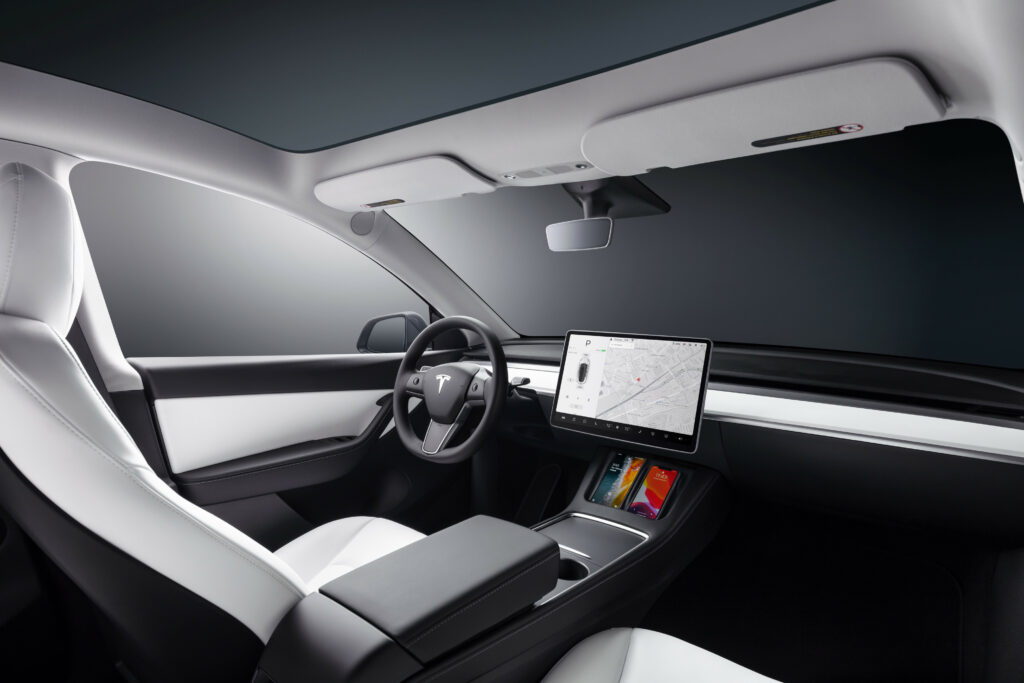
As you’re soon about to learn, the world of autonomous cars and self-driving technology is full of terms worth defining. For starters, what is self-driving in the world of transportation? Self-driving cars can drive in some or even all situations without driver input, but a human must always be ready to take control. Think of them as a crucial stepping stone on the path to full autonomy.
Self-driving cars are not fully autonomous. In the world of professional engineering, ‘automation’ is the preferred term for the sliding scale of vehicle operation status. In fact, the United States National Highway Traffic Safety Administration (NHTSA) refrains from using the term “self-driving” at all, and most engineers disagree with the use of the term. Let’s dive into the terms and definitions that relate to so-called self-driving cars, and the future of automation as a whole.
First, let’s clear the confusion. Talking about automated cars warrants a glossary of its own. Being well-informed is the key to knowledge, and we all know knowledge is power. Here’s a list of the terminology you’re likely to encounter in a self-driving world. In most cases, the difference is in the finest of details.
These are technological features designed to improve driving safety. These software-based systems improve a driver’s ability to react to adverse situations on the road. Examples include adaptive cruise control, forward collision warning and lane departure warning. ADAS features are very common in newer car models.
This term is thrown around a lot, but a true autonomous vehicle is capable of sensing its environment and operating without human involvement. Human passengers can take their eyes off the road and just enjoy the ride. Imagine entering the destination address, and that’s it. Autonomous vehicles can do everything that an attentive human driver can do.
Usually referring to Tesla Autopilot, which is a suite of ADAS features that enable the vehicle to steer within a lane and adjust speed in response to surrounding traffic. It’s essentially adaptive cruise control plus lane centering. Autopilot is standard on all new Tesla models.
Tesla “Full Self-Driving” in its current iteration is not much different from driver assistance technologies. Tesla enthusiasts, relax. That’s likely to change as Tesla updates the software regularly via over-the-air updates that simply require WiFi to install. Automotive engineers generally refrain from using this term altogether, as it’s more associated with marketing than with engineering automation. A true full self-driving car can navigate roads with human supervision. Tesla’s program is getting close, but as thousands of videos online will show you, Tesla FSD is not quite there yet. It is impressive though. Tesla FSD can be yours (someday) for an additional $12,000 when you buy a new Tesla vehicle.
This is when a vehicle’s operation is limited to a restricted geographic area. For example, Waymo’s driverless vehicles are geofenced to only operate in the Phoenix metropolitan area. Geofenced autonomous vehicles will grow in popularity before true, independent autonomous vehicles put rubber on public roads.
Light Detection and Ranging. LiDAR is the go-to ‘radar’ technology for nearly all self-driving innovators. Except of course for Tesla, who seems to think image processing with cameras is the way to go. LiDAR can ‘see’ through low visibility conditions, including fog and heavy rain.
When a vehicle can perform most driving tasks in a geofenced area, but with constant human monitoring and intervention when needed, some in the automotive industry consider it to be self-driving. The degree of human input varies. More on that below…
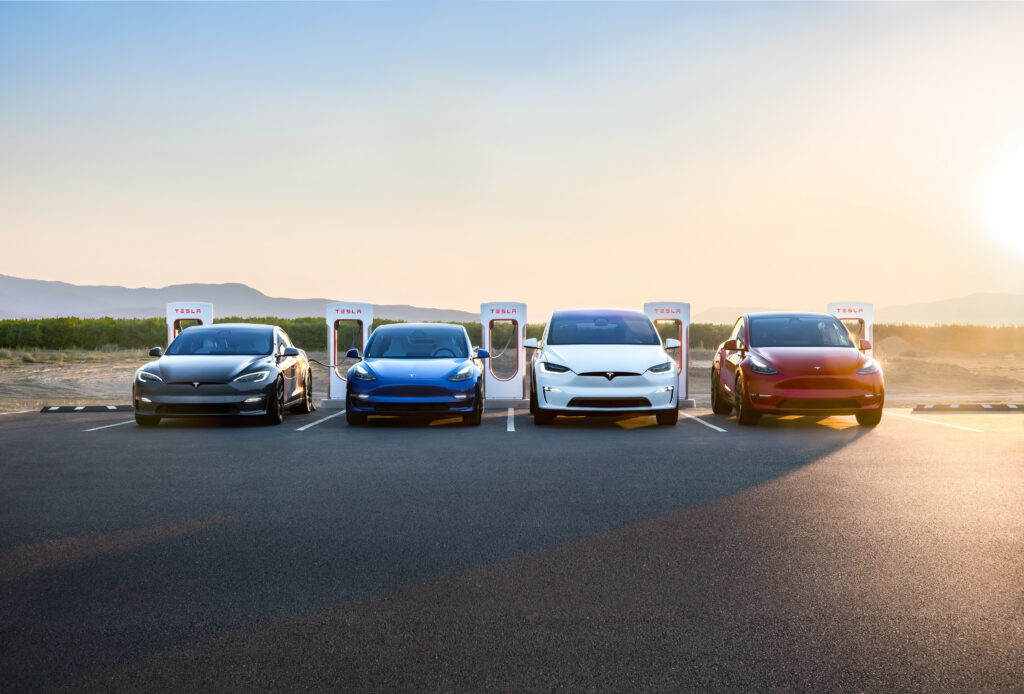
But wait, there’s more! Engineers rate the levels of automation based on how independently the system can perform tasks, and how much human input and supervision is required. Here are the basics of the five levels of automation, according to the Society of Automotive Engineers.
Now that we’ve covered the engineering and industry jargon, let’s revisit our definition.
What exactly is self-driving technology? The most agreeable definition is that self-driving cars fall within level 3 or level 4 automation, in which the vehicle can perform most driving tasks in a geofenced area, but with constant human monitoring and intervention when needed. Fully autonomous vehicles fall within the ultimate frontier of automotive engineering, Level 5. A true autonomous vehicle can operate from start to finish without driver input or attention. Imagine reading a book or taking a nap on your way to work.
No cars on today’s roads are capable of fully autonomous driving. Automated driving remains years away, however tremendous resources are committed to the cause of unraveling the ultimate challenge in automotive engineering. Tesla’s Autopilot and Full Self-Driving features are branded as Level 2 systems, which means that constant supervision is required, and intervention is to be expected. This discrepancy between the Level 2 classification of Tesla’s driver assistance systems and the names of the products remains the source of much controversy among engineers and driver safety advocates alike. Can’t we all agree that honest advertising is always in the interest of safety and responsibility?
Aside from automakers, there are dozens of other companies innovating in the autonomous driving space. Waymo, Argo AI and Cruise are all putting geofenced autonomous cars on the road today for real-world testing and limited customer use for ride-hailing. What is a self-driving car in 2022? It’s likely a prototype with limited use.
Tesla is the clear leader in advanced driver assistance systems. However, the extent of Tesla’s lead among industry competitors is not nearly as clear as it was a few years ago. Tesla has taken a bold step away from using radar for sensory inputs. The decision to remove LiDAR from new Tesla models starting in 2020 was so controversial that some senior engineers quit in protest.
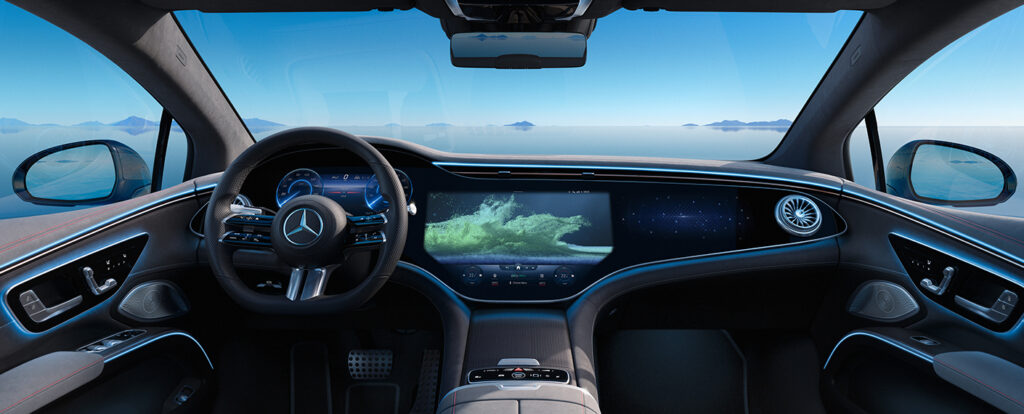
Remarkably, Tesla is no longer the only automaker breaking autonomy barriers. In 2021, Mercedes-Benz became the very first automaker to get regulatory approval for Level 3 autonomous driving on limited public roads. For now, Mercedes Drive Pilot is available on 8,197 miles of German highways at speeds up to 37 miles per hour. What makes Mercedes Drive Pilot so special is that it is the first approved consumer-ready system to permit the driver to take their attention away from the road while the vehicle is in motion. Even Tesla’s Full Self-Driving feature does not permit the driver to direct their attention elsewhere, despite evidence of the contrary on social media.
For the foreseeable future, American roads will see even more Level 2 driver assistance systems calculating their way through traffic as nearly every automaker in the market steps up their autonomy game. Level 3 remains in development, even for Tesla. Mercedes has not announced if it will seek approval in the US anytime soon, likely due to the murky regulatory environment.
Fully automated driving is likely in our future, but no one knows when it will be safe and accessible to all. The pace of innovation ebbs and flows. Engineers, regulatory agencies and insurance companies have some hard problems to solve. For now, proceed with caution when at the wheel of a “self-driving” vehicle. Their arrival is a great reason to look twice when crossing the street. You never know who (or what) might be coming around the corner.
CarEdge Just Launched a New Search Engine to Make Buying Your Next Car Easier!
We have thousands of vehicles listed today. Each listing includes industry insights, empowering data and the true TotalPrice that will make buying a car the transparent process it should’ve always been. We show you what dealers don’t want you to know. We believe that data can be your superpower when buying a car. Check it out here!
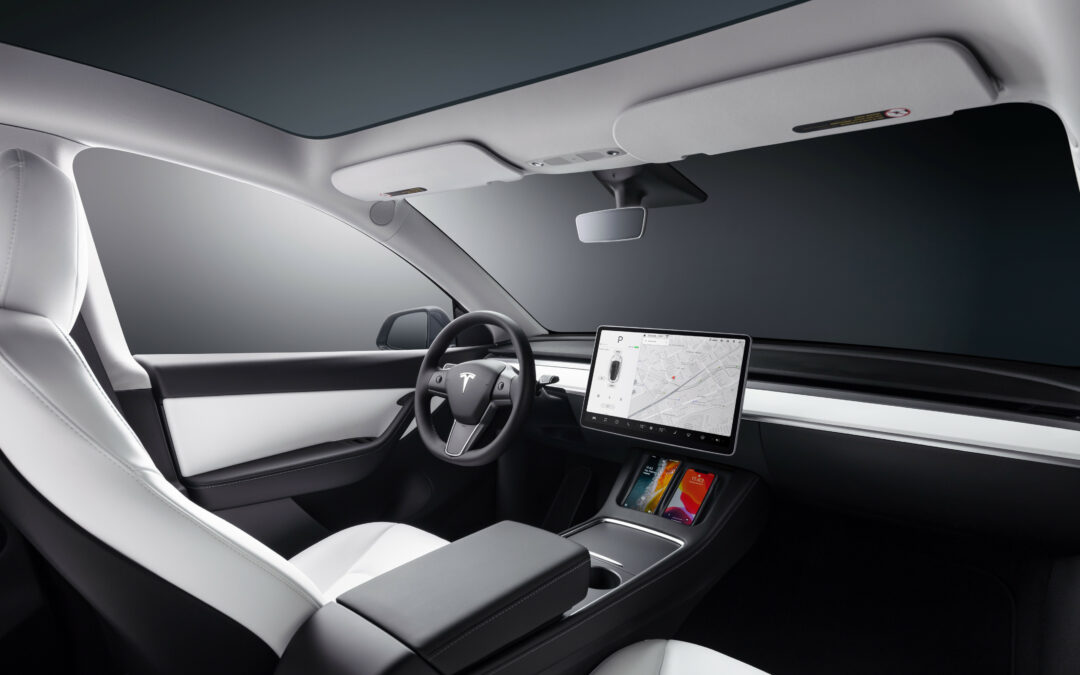
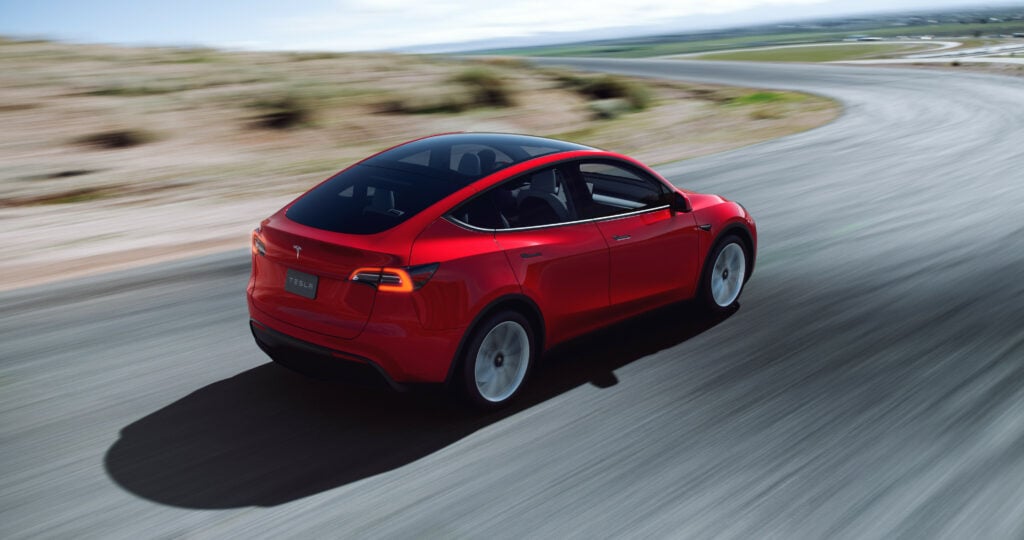
The word “recall” sure is thrown around loosely these days. By now, you likely know that Tesla fixes the vast majority of recalls with an over-the-air software update. In the tenth recall in just four months, Tesla is addressing a pedestrian safety concern brought up by the US National Highway Traffic Safety Administration (NHTSA).
During the 2020 holiday season, Tesla sent a gift of sorts to all of their customers. The cars received an update that turned the external speakers into a boombox. The Tesla Boombox can play a number of customizable sounds (music, jokes, fart noises…) out of the same speakers that are meant to alert pedestrians of the approaching, silent electric car. It’s the customizable feature that seems to be at the center of this recall. Under certain circumstances, the Boombox can disrupt the federally-mandated pedestrian warning risk sounds.
In typical Tesla fashion, the pioneering automaker will push an over-the-air update to all of the affected cars. Tesla cars just need a WiFi connection to receive these frequent updates. Some OTA updates even increase performance or battery life.
Check out Tesla’s official response to the NHTSA investigation here. It’s interesting to observe the automaker interacting with the federal agency that is always on their case. Here’s how simple the Tesla Boombox recall remedy is:
“Tesla will perform an over-the-air (OTA) software update that will disable the Boombox functionality when the vehicle is in Drive, Neutral and Reverse modes, free of charge. Owner notification letters are expected to be mailed April 5, 2022.”
Tesla Boombox will only work in Park mode it seems. Perhaps that was common sense all along? Tesla’s engineers typically work quickly to send such urgent recall fixes over-the-air. While the notice says that owners will receive notices by mail in April, it’s very likely that the remedy will update cars much sooner.

Lots of people aren’t fans of Tesla for one reason or another. However the EV pioneer does have an undeniable advantage when it comes to updating their vehicles. With well over 2 million Tesla vehicles on the road today, OTA updates are a key selling point for car buyers in the electric vehicle market. Other automakers are rushing to implement the capability in their future models, as seen by recent announcements from GM, Ford and literally every EV startup today.
We recently took a deep dive into over-the-air updates, and shared automaker plans for adding the feature to their lineups. Learn more about OTA update capabilities.
Let us know what you think in the comments. Does the Tesla Boombox recall make sense? Would you buy a Tesla? Does OTA update capability factor into your decision?